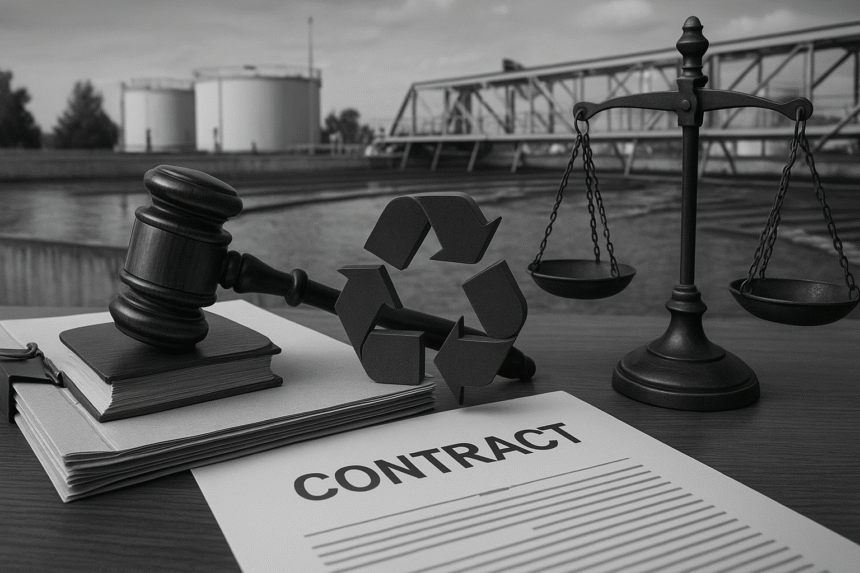Ultimate Breakdown of DBOT Contracts for Green Infrastructure
Definition, Examples, and Legal Implications
Quick Answer
A DBOT contract—short for Design, Build, Operate, Transfer—is a type of public-private partnership (PPP) agreement where a private company is responsible for designing, building, and operating an environmental infrastructure (like a waste treatment plant), and then transferring it back to the public authority after a set period. This model is widely used in environmental, energy, and infrastructure projects to reduce upfront public costs and ensure efficient project delivery.
Breaking Down the Definition (DBOT)
A DBOT contract is a structured arrangement involving four key phases:
-
Design: The private entity handles all planning, engineering, and technical documentation.
-
Build: The company finances and executes the construction of the facility.
-
Operate: After completion, the private party runs the facility for an agreed duration, typically earning revenue or service payments.
-
Transfer: At the end of the contract, ownership and operational control are handed over to the government or public agency.
The DBOT model is not a sale or permanent privatization. The asset always reverts to the public sector. It’s also different from a BOT (Build-Operate-Transfer) model because it explicitly includes design responsibility in the contract.
Why It Matters in Environmental Projects
DBOT contracts are one of the many models under the broader umbrella of Public-Private Partnerships (PPP). These are crucial in enabling governments to deliver complex infrastructure projects without bearing all the upfront costs.
-
Financing large-scale green infrastructure
-
Ensuring efficient and sustainable operations
-
Managing environmental compliance over time
DBOT contracts solve these problems by:
-
Shifting financial and performance risks to the private partner
-
Encouraging innovation in design and long-term efficiency
-
Guaranteeing the transfer of a functioning asset after years of optimized operation
For example, a municipality may use a DBOT model to develop a solar-powered landfill leachate treatment plant, ensuring energy efficiency, regulatory compliance, and skilled operations, without the city having to manage it all from day one.
Legal and Practical Implications
A DBOT contract is a long-term legal agreement involving strict performance metrics. Key areas include:
For a deeper understanding of DBOT and related PPP models, check the World Bank’s guide to DBOT Contracts
1. Risk Allocation
-
The private party assumes design, construction, and operational risk.
-
The public entity often guarantees minimum payments or waste volume (especially in waste-to-energy plants).
-
Contracts must define force majeure, change in law, and default consequences precisely.
2. Licensing and Regulatory Compliance
-
The operator must secure all permits, environmental clearances, and health/safety approvals.
-
In cross-border projects, foreign operators may face local registration or joint venture requirements.
3. Performance Standards
-
The public authority typically sets performance benchmarks (e.g., “98% waste removal efficiency”).
-
Failure to meet benchmarks may trigger penalties, termination, or loss of revenue.
4. Transfer Obligations
-
The contract must define what gets transferred: land rights, equipment, staff, or IP.
-
Often includes step-in rights for public entities if operations fail.
DBOT contracts also raise negotiation dynamics involving financing, tax, and insurance coverage, which vary by jurisdiction.
Sample Use Case of DBOTs: Wastewater Plant in North Africa
Let’s say the Ministry of Environment partners with a foreign company under a DBOT model to build a regional wastewater treatment facility.
-
Design: The company proposes a modular design that can expand based on population growth.
-
Build: It funds and constructs the plant over 24 months using imported technology.
-
Operate: The company has run the plant for 15 years, charging the government a fee per cubic meter of water treated.
-
Transfer: After 15 years, the facility, along with trained local staff, is handed over to the government.
Key clauses in this contract would include:
-
Currency and payment protections (due to exchange rate volatility)
-
Environmental performance guarantees
-
Equipment handover conditions
-
Local subcontractor obligations
This structure aligns public goals (safe, compliant water treatment) with private incentives (stable returns through efficient operations).
Summary Table: What to Know About DBOT Contracts
| Key Elements of DBOT Contracts Details | s |
|---|---|
| What DBOT Stands For | Design, Build, Operate, Transfer |
| Ideal Users | Governments, municipalities, and environmental ministries |
| Common Applications | Water treatment, landfills, waste-to-energy, and renewable plants |
| Key Legal Clauses | Risk allocation, performance KPIs, dispute resolution, termination |
| Core Benefit | Transfers design and operations risk to a skilled private partner |
| Final Result | A working environmental facility, transferred to the public authority |
Call-to-Action
Would you be thinking of using a DBOT contract? Please book a consultation with our legal experts today.
You can book a consultation to get your contract reviewed by an environmental law expert.



Leave a Reply